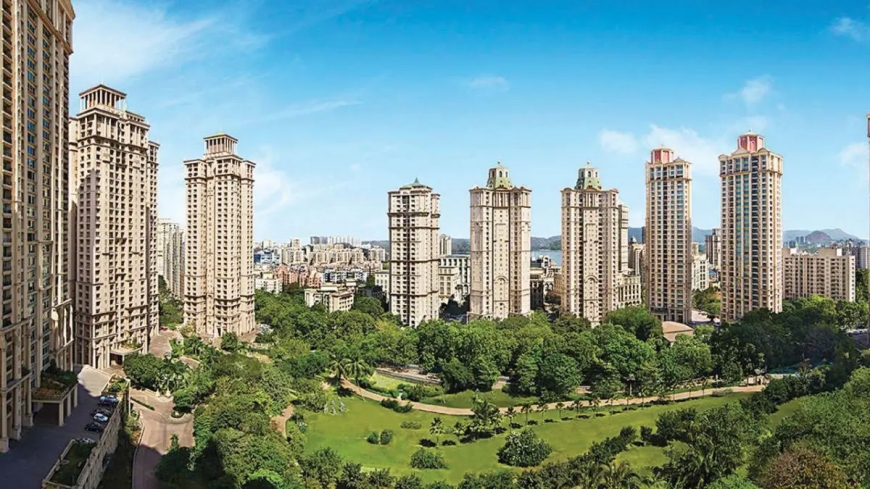Tier-2 cities are expected to drive the next wave of real estate growth in India.

Shrinivas Rao, FRICS
CEO, Vestian
How is the real estate market evolving in tier-2 cities? What are the key trends to look for?
The recent pandemic played a pivotal role in the growth of tier-2 cities. Many professionals reverse-migrated to tier-2 and tier-3 cities in search of safety and security. The rise of remote work and hybrid models, coupled with a desire for better work-life balance and affordability, further encouraged their relocation. As a result, demand for residential properties surged, highlighting the renewed emphasis on homeownership during this unprecedented crisis. The demand is likely to increase further with the rapid urbanization of tier-2 cities in India. As per the World Bank, India’s towns and cities are expected to be home to 600 million people (40% of the population) by 2036, up from 31% in 2011. To accommodate this growing population, tier-2 and tier-3 cities are expected to expand their city boundaries which may result in higher growth in city peripheries.

Reverse migration of working professionals also resulted in an increase in demand for office spaces in tier-2 and tier-3 cities. To fulfill the sudden increase in the demand for office spaces, several co-working players expanded their footprint in these cities. Awfis, Indiqube, Incuspaze, Regus Spaces, and MyBranch together have more than 140 co-working centres spread across tier-2 and tier-3 cities. Furthermore, tier-2 cities have more than 80 mn sq ft of office stock with an upside potential of crossing 100 mn sq ft in the next 4-5 years. As per foundit, tier-2 cities witnessed 11% increase in hiring in 2024 compared to the previous year with Kochi, Coimbatore, and Jaipur emerging as key hiring locations. The establishment of new companies and expansion of existing firms to accommodate new hires is likely to contribute significantly to office demand in these cities. Moreover, demand for warehouses is also likely to increase with the growing prominence of e-commerce in tier-2 and tier-3 cities.
What are the key demand drivers of real estate market growth in tier-2 cities?
The growth of Micro, Small, and Medium Enterprises (MSMEs) played a major role in shaping the economic profile of tier-2 cities. Moreover, rise in the number of start-ups fueled the growth in the real estate sector across the country including tier-2 and tier-3 cities. According to the Ministry of Commerce and Industry, around 50% of the DPIIT-recognized startups are from tier-2 and tier-3 cities owing to competitive real estate costs, rapid infrastructure development, lower operating costs, and an abundance of talent pool.
Along with MSMEs and start-ups, construction of mega infrastructure projects contributed significantly to the real estate growth in tier-2 and tier-3 cities. Several government initiatives such as DMIC, Bullet Train, Bharatmala, Sagarmala, UDAN, and metro rail projects improved connectivity and provided impetus to the real estate sector in these cities. A total of 86 aerodromes have been operationalized under the UDAN scheme, enhancing regional air connectivity from unserved and underserved tier-2 city airports. This has made air travel affordable and accessible for all. Moreover, Indian railways launched 41 Vande Bharat trains to improve the connectivity of tier-2 cities with tier-1 cities. The government has also planned to expand Kochi port to improve the docking of large vessels at the port. These upcoming mega infrastructure projects are likely to improve intracity and intercity connectivity, boosting the economic profile of tier-2 and tier-3 cities.
How is the trend in luxury and affordable residential projects in these cities?
Robust economic growth, rapid infrastructure development, and the growing desire to own a house contributed significantly to the demand for residential properties in tier-2 cities. As per industry estimates, housing sales increased by 11% compared to the previous year with nearly 2 lakh units sold in tier-2 cities. Affordable property prices compared to tier-1 cities, a rise of MSMEs and start-ups, and favourable government initiatives lured investors and homebuyers to invest in tier-2 cities for a better return on investments.
Tier-1 cities such as Mumbai, Bengaluru, Delhi, etc. dominated the real estate sector for a long time, but in recent times tier-2 cities have emerged as a viable option owing to their affordability, upside growth potential, and abundance of local talent. Real estate in tier-2 cities has garnered interest in the recent past as luxury properties and villas are available at 20-30% cost compared to similar properties in tier-1 cities. As per a recent industry survey, nearly 30% of investors are inclined towards tier-2 cities for their purchase of luxury properties due to lower land costs and higher returns.
What is the scope of commercial real estate projects in tier-2 cities?
As mentioned above, reverse migration of working professionals played a pivotal role in the development of grade-A office spaces in tier-2 and tier-3 cities. Several large MNCs expanded their footprint to these cities to tap local talent and reduce their real estate and operational costs. These companies chose to lease co-working office spaces initially to test new markets, which resulted in a rise in the demand for co-working spaces. Awfis, Indiqube, Incuspaze, Regus Spaces, and MyBranch together have more than 140 co-working centres in these cities. Furthermore, tier-2 cities have more than 80 mn sq ft of office stock with an upside potential of crossing 100 mn sq ft in the next 4-5 years. As more and more companies expand their footprint to tier-2 and tier-3 cities, the scope for commercial real estate widens in these cities.
Which are the major tier-2 cities you find evolving?
The top tier-2 cities in India are Lucknow, Indore, Ahmedabad, Jaipur, Kochi, Chandigarh, Nagpur, Bhubaneshwar, Visakhapatnam, Surat, Raipur, Thiruvananthapuram, and Guwahati. Several mega infrastructure projects and favourable government policies are likely to provide impetus to these cities, boosting their economic profile. Enhanced connectivity through road, rail, air, and sea is expected to drive the next wave of growth in tier-2 and tier-3 cities across the country.
How do you look at tier-2 cities as the future growth drivers of Indian real estate market?
Government approved the development of 12 new industrial smart cities with an investment of Rs 286 bn and three new railway lines to connect Odisha, Jharkhand, West Bengal, and Chhattisgarh and unlock their potential. The government has also planned to build educational institutions in tier-2 cities to upskill local talent. Three new Indian Institute of Technology (IITs) at Bhilai, Tirupati, and Jammu, three Indian Institute of Management (IIMs) at Bodh Gaya, Jammu, and Visakhapatnam, and one Indian Institute of Skills (IIS) in Kanpur are under construction. According to a report from Deloitte India and Nasscom, tier-2 and tier-3 cities in India house up to 15% of the Indian tech talent pool which may provide impetus to real estate demand in these cities.
Furthermore, metro rail projects in tier-2 cities (Agra Metro, Indore Metro, Jaipur Metro, Ahmedabad Metro, and Bhopal Metro) are under construction and expected to enhance intracity connectivity, once completed. In a nutshell, tier-2 cities are expected to drive the next wave of real estate growth in India.

















